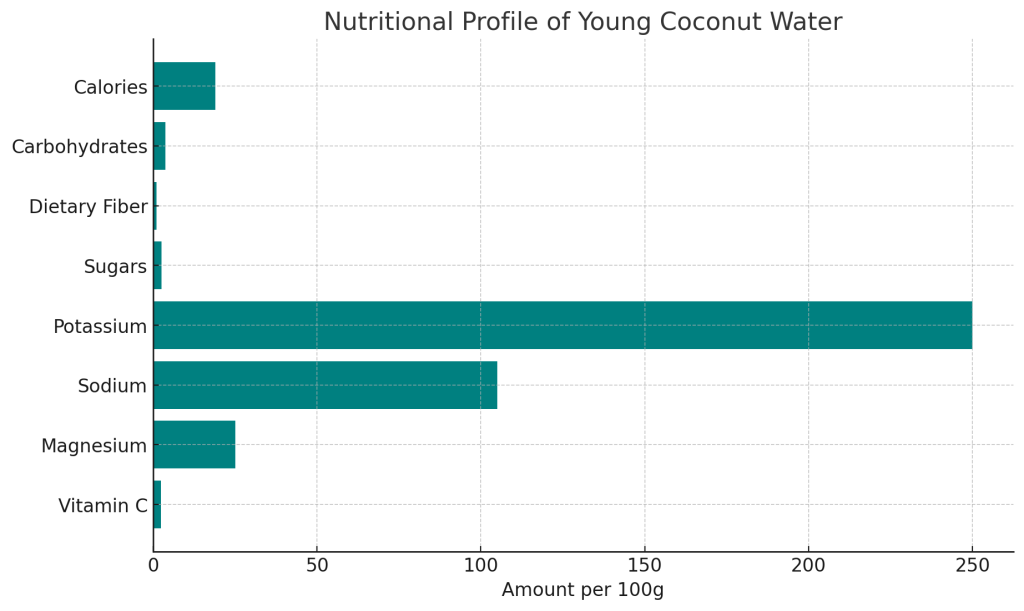How to Open a Young Coconut: A Step-by-Step Guide
The Art of Opening a Young Coconut
Opening a young coconut may seem daunting, but it’s an essential skill for coconut enthusiasts. Young coconuts, unlike their mature counterparts, are known for their soft, jelly-like meat and refreshing water. They are a staple in tropical cuisines and a favorite among health-conscious individuals due to their nutritional benefits.
Step 1: Prepare the Coconut
Materials Needed
- Heavy cleaver or chef’s knife
- Stable cutting surface
Process
- Clean the Coconut: Start by washing the exterior of the coconut to remove any dirt or debris.
- Cutting the Excess Coir: Young coconuts often come with a husk or coir. Begin by slicing off the excess coir around the top, revealing the hard shell beneath.
Step 2: Opening the Shell
- Creating the Initial Incision: Hold the coconut firmly on a stable surface. Using the corner of the cleaver or chef’s knife (not the tip), make a forceful incision at the top of the coconut.
- Cracking the Shell: Continue to turn the coconut, making similar incisions around the top. This will create a crack along the circumference of the coconut’s top.
- Opening the Top: After creating a crack around the top, use the cleaver or knife to pry open the coconut. This should reveal the water and soft meat inside.
Safety Tips
- Always keep your fingers away from the blade’s path.
- Ensure the coconut is stable on the cutting surface to prevent slipping.
Step 3: Accessing the Coconut’s Goodness
- Extracting the Water: Once opened, you can directly drink the coconut water or pour it into a container. It’s a refreshing and hydrating drink, rich in electrolytes.
- Scooping the Meat: The young coconut meat can be scooped out using a spoon. It’s soft, jelly-like, and can be eaten raw or used in various recipes.
Beyond Opening: Exploring Young Coconuts
Young coconuts are more than just a refreshing drink; they are a culinary delight. The soft meat of young coconuts is perfect for smoothies, desserts, or even savory dishes. Visit our internal pages on How to Eat Young Coconut and How to Tell if a Young Coconut is Bad for more insights on enjoying this tropical treat.
Nutritional Profile of Young Coconuts
Young coconuts are not only delicious but also packed with health benefits. They are a natural source of hydration, rich in electrolytes like potassium, magnesium, and sodium, making them an excellent drink for replenishing fluids.
Nutritional Facts (per 100g of Young Coconut Water)
| Nutrient | Amount |
|---|---|
| Calories | 19 kcal |
| Carbohydrates | 3.7 g |
| Dietary Fiber | 1.1 g |
| Sugars | 2.6 g |
| Potassium | 250 mg |
| Sodium | 105 mg |
| Magnesium | 25 mg |
| Vitamin C | 2.4 mg |
Health Benefits
- Hydration: Ideal for rehydrating after exercise or a day in the sun.
- Low-Calorie: A guilt-free, refreshing beverage for weight-conscious individuals.
- Rich in Electrolytes: Supports body’s fluid balance and nerve function.
- Dietary Fiber: Aids in digestion and promotes gut health.

Creative Uses of Young Coconut
Beyond drinking the water and eating the meat, young coconuts offer a realm of culinary possibilities.
Recipe Ideas
- Smoothies: Blend the coconut meat with the water and your choice of fruits for a nutritious smoothie.
- Desserts: Use the soft meat in desserts like coconut pudding or as a topping for ice cream.
- Savory Dishes: Incorporate coconut meat into salads or use it in tropical-inspired curries.
Sustainability and Coconut Farming
Embracing young coconuts also means supporting sustainable farming practices. Many coconut farmers follow eco-friendly methods, ensuring the health of their trees and the surrounding ecosystem. Learn more about sustainable practices in coconut farming on our dedicated page about Coconut Farming Practices.
The Global Journey of Coconuts
The coconut’s journey from tropical groves to global markets is a fascinating tale of nature’s ingenuity and human innovation. This fruit has deeply embedded itself in various cultures, influencing culinary traditions, health practices, and even economic sectors worldwide.
The Coconut’s Cultural Significance
- Culinary Influence: From the Caribbean to Southeast Asia, coconuts play a vital role in regional cuisines.
- Health Practices: Traditional medicine systems like Ayurveda and Siddha use coconuts for their healing properties.
- Economic Impact: The coconut industry supports millions of livelihoods, from farmers to traders.
Coconuts in Popular Culture
- Movies and Music: Coconuts have featured in numerous films and songs, often symbolizing tropical paradise.
- Literature and Folklore: Many cultures have myths and stories revolving around coconuts, signifying life, fertility, and prosperity.
Tips for Buying and Storing Young Coconuts
To fully enjoy the benefits of young coconuts, it’s essential to select and store them properly.
Buying Tips
- Look for Freshness: Choose coconuts with a bright, unblemished exterior.
- Check for Weight: A good young coconut should feel heavy for its size, indicating ample water inside.
- Avoid Cracks or Leaks: These can be signs of spoilage.
Storage Tips
- Refrigerate: Store young coconuts in the refrigerator to extend their shelf life.
- Consume Quickly: Once opened, consume the coconut water and meat within a day or two for best freshness.
Conclusion and Next Steps
Opening a young coconut is an art that reveals the tropical treasure inside. This guide should make the process accessible and enjoyable for everyone. For more coconut-related content, don’t hesitate to explore our other articles, and always remember to enjoy coconuts responsibly and sustainably.

